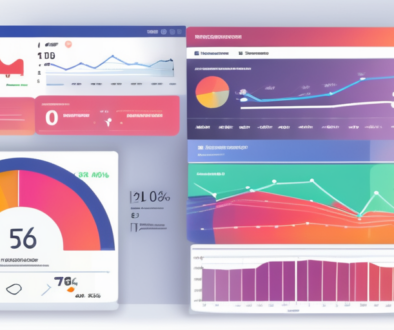What are the World’s Top CMO’s Worried About?
The research team at IBM released a report they created after discussing marketing questions with some of the top CMOs in the world. They personally interviewed over 1,700 CMOs to get their feedback on the state of the industry. You can download the full report (70+ pages) here, but we’ll break down some of the most fascinating findings in this post (which will be far less than 70 pages). Although still a couple years old, the survey gives us great insight into the challenges companies are facing.
What’s Coming:
As social media comes into it’s own, the amount of data explodes, and we face additional marketing challenges. It’s useful for us to begin looking at what are some of the major changes we’ll face over the next five years.
Here are some of the top challenges faced by CMOs. The percentage indicates the number of CMOs who responded that they felt unprepared to face these challenges.

Let’s breakdown the top four challenges:
Data Explosion
We’re continuing to see an explosion of data across all sectors. Even small businesses now have access to huge amounts of data through programs such as Salesforce and Google Analytics. Unfortunately, many business owners have difficulty making decisions from this data.
Before digging into any data, the first step is determining what we want to learn from the data. Software packages like Google Analytics can be overwhelming when we first look into them. It’s easy to create a huge number of meaningless charts and graphs without any attention to what they actually mean.
Your company can learn from data, but you first have to decide what you want to learn. Then you’ll be able to use the data to find the answers. And you may just learn something unexpected along with way.
Social Media
Oh, social media. We’ve all been told that it needs to be a part of our business strategy. But how do we make it work? Just today I was browsing through the Twitter feeds of dozens of small businesses in the Fort Collins area, and most of them look something like this:

That’s a real twitter handle for a real business. They only have one follower. And they’ve sent out 45 tweets! Unfortunately, no one is listening.
In order to create a following on social media, you need to create something worth following. As a pull channel, successful branding on social media involves creating content that is worth sharing. Sometimes this can be as simple as setting up a tripod and recording a video. Other times it requires much more effort.
Winning on social requires a solid base of content. Social without content is virtually dead.
Channel and Device Choices
In the glory days of advertising, you had only a handful of channels. There was print, radio, billboard, and (if you had money) television. Today, we’ve added the web and all of the thousands of unique channels it can bring. There are new opportunities for PR and many users are engaging with brands on mobile devices.
Most brands don’t need to tackle all of these channels. In fact, only a tiny handful of brands have the budget and brainpower to do that well. Instead, brands need to find the channels where their community is currently engaging. Finding this community and building a strategy to foster it is the single most cost effective way to build your brand online.
Shifting Consumer Demographics
Rounding out the top 4 challenges are the shifting consumer demographics. A generation that has grown up online now makes a large number of purchasing decisions. These users are used to seeing ads and ignoring them without a second thought. The tools and tactics we used before are no longer as effective.
Engaging with changing demographics requires a shift in our thinking as marketers. In order to engage with the demographic, we need to understand that demographic. Although formal studies are helpful, today’s tools allow us to collect demographic data from users as they visit our website. Using big data tools that collect first party and third party data, we can create profiles of our users that allow us to know their interests and passions with as much accuracy as most surveys.
Big Brands and Small Business
The challenges inherent with large brands are the same challenges that small businesses are facing. No longer does a huge marketing budget guarantee success. Today small businesses can compete on the same plane. The web allows us to target niche markets with more efficiency than ever. We don’t need to spend millions of dollars blanketing top media channels with ads. Instead, highly targeted, well placed ads and content can generate huge returns.
The tables have turned. Small businesses can now compete with the big ones.


